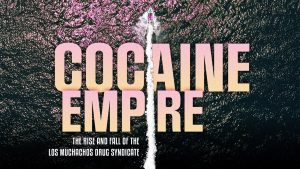Ron Klein’s The Caribbean Connection for Organized Crime defies traditional narratives of the drug trade by spotlighting the critical, albeit often hidden, role women play in these clandestine networks. Through a gripping exploration of female involvement—from couriers to central operatives—the book offers a compelling, multidimensional portrayal of how women have been both exploited by and instrumental in shaping the Caribbean drug trade. Klein’s work disrupts the stereotypical image of the male drug lord at the helm and instead presents a more layered, human-centered narrative that highlights the breadth of women’s experiences in these illicit economies.
In the early phases of the Caribbean drug trade, women were often used as drug mules—seen as less suspicious by law enforcement due to gender stereotypes. Ron Klein illustrates how many were coerced into these roles through manipulation and exploitation. He notes, “The problem sometimes the pusher is a Pimp and gives the prostitute drugs to keep them under his control,” underscoring the lack of agency these women initially had.
However, as the trade expanded, women’s roles evolved. Klein highlights cases like Izabella, who transitions from an unaware spouse to a willing participant, saying, “I have many friends who use marijuana, and maybe I can be their connection.” This shift reflects how exposure and economic need could lead women to embrace active roles.
Klein shows that such transformations weren’t rare. Many women began managing logistics, finances, and even overseeing distribution networks—tasks traditionally handled by men. Their perceived innocence often allowed them to operate undetected, turning societal bias into a tactical advantage. This evolution from marginalized participants to strategic actors challenges the traditional male-centered narrative of the drug trade and reveals the complex, often hidden, contributions of women in organized crime.
Klein’s analysis goes beyond individual stories to examine the systemic factors that funnel women into the drug trade. Economic instability, lack of educational and employment opportunities, and the burden of single motherhood are all cited as forces that make participation in the drug economy a pragmatic, if perilous, choice. In one particularly emotional passage, Klein writes, “Having children of my own, I asked how I could help…that was the beginning of my mole introduction,” demonstrating how emotional manipulation and financial desperation often go hand in hand in recruiting women. The economic precarity faced by many women in the Caribbean becomes a fertile ground for recruitment into the drug trade, where the promise of financial stability can outweigh the risks.
Importantly, Klein’s work humanizes these women rather than portraying them merely as victims or criminals. He makes it clear that their actions exist within complex social, emotional, and economic contexts. The story of Josephine, a secretary who initially works as a mole and later switches allegiances, is particularly revealing. “Josephine said, ‘I promise to tell you exactly how it happened…they brainwashed me,’” Klein reports. Her narrative underscores the psychological toll and emotional manipulation involved in her recruitment and eventual disillusionment. Josephine’s evolution from informant to insider to whistleblower speaks volumes about the shifting loyalties and inner turmoil many of these women face.
Klein’s insistence on portraying women as full actors in the drug trade—not just accessories to male figures—invites a reassessment of both law enforcement strategies and public policy. Traditional punitive approaches often fail to take into account the unique socio-economic pressures that drive women into these roles. Moreover, criminal justice systems rarely provide rehabilitation programs tailored to women’s specific needs, such as childcare support, mental health services, or protection from abusive partners. Klein’s work suggests that without addressing these root causes, any attempt to curb female participation in organized crime will be short-sighted and ineffective.
The broader implications of Klein’s research extend beyond the Caribbean. Globally, women’s roles in the drug trade are gaining increased attention, from cartel operatives in Latin America to meth couriers in Southeast Asia. Similar patterns emerge: women entering the trade out of economic necessity, initially occupying low-level positions, and then in some cases ascending to positions of power. Klein’s book, though focused on the Caribbean, thus serves as a foundational text for scholars and policymakers seeking to understand this global phenomenon. His documentation offers a template for more inclusive and effective research methodologies, as well as for justice systems that better reflect the realities on the ground.
In sum, The Caribbean Connection for Organized Crime does more than recount tales of crime and deception. It challenges us to rethink the very fabric of the drug trade by shining a light on the oft-overlooked female actors within it. Through detailed storytelling and careful analysis, Klein paints a picture of women navigating a world fraught with danger and possibility, where decisions are seldom black-and-white. By giving voice to these women, Klein contributes a critical dimension to the discourse on organized crime, one that demands both empathy and action. As he cautions, “Never assume that anyone in our inner circle can’t be the mole,” a sobering reminder that underestimation—especially of women—remains one of the drug trade’s most underestimated weapons.


